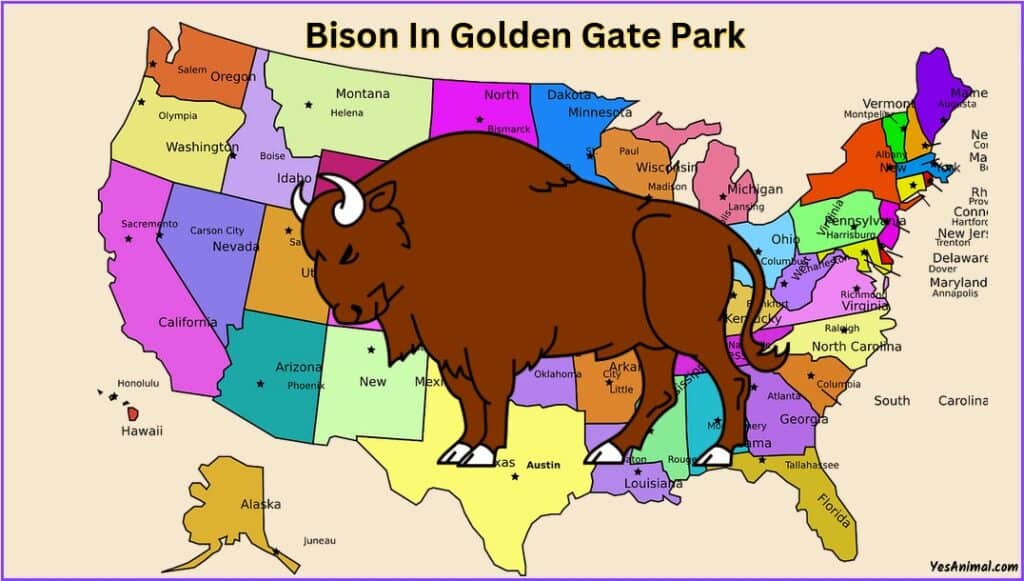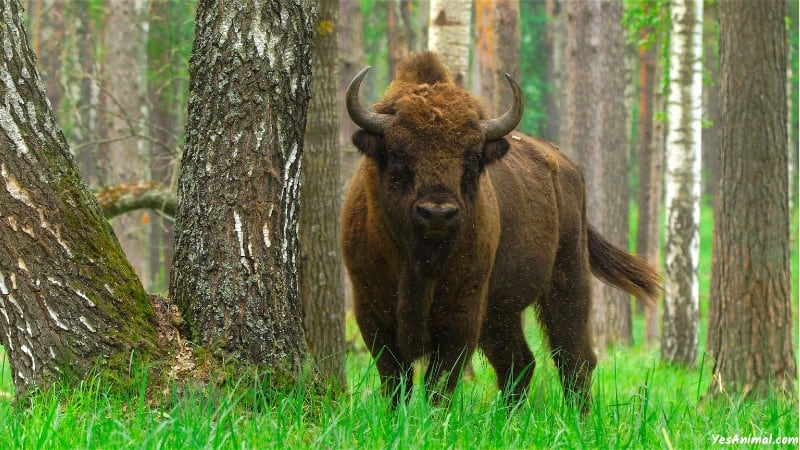Last Updated on September 14, 2023 by Amin Tawar

San Francisco’s Golden Gate Park is home to so many treasures across about 1,000 acres. It is arguably one of the best urban parks in the world. Some windmills seem like they belong in the countryside of Dutch, and through an ornate gate, you can even find the Japanese tea garden in the U.S.
But the wildest jewel in the Golden Gate Park is the American bison. Yes, this might be unexpected as they stand out in San Francisco’s urban setting.
So, In this article, I’ve explained everything you need to know about the bison herd in Golden Gate Park.
Do Bison Live In Golden Gate Park?
Yes, there are bison currently living in the Golden Gate Park. But they are not native species to San Francisco. As they are not descended from the actual species that were brought to the park. All the bison in the park are female. On any given day of the year, you can see bison either resting or grazing in the park.
Why Is There Bison In Golden Gate Park?
The answer goes hundreds of years back. In the late 1500s, an estimated 30 million bison were roaming around the American Continent. They grazed all over the East, from Canada up through northern Mexico.
As European settlers moved in, bison habitats were destroyed by railroads, or converted into farms. Also, imported cattle made grazing competition and brought new diseases to them.
But the biggest threat was hunting as the meat was exported, skins commercialized to tanneries, and bones were used to make fertilizer. Bison were also killed for gaming. Contests were held and tourists were also allowed to shoot them from their train seats. By 1889, the number dwindled to 1,000.
It was near this time of the century that work started on Golden Gate Park. Which was constructed to recreate the Wild West and the park required bison. In 1891, the first bison were brought to the park and were later joined by many more from public and private herds.
How Do You See The Bison At Golden Gate Park?

A symbol of the American, bison were nearly driven to extinction by the time the Park was established. Visitors today, are often surprised to see a herd of bison grazing in the western end of the park’s meadow, but these shaggy, huge, Great Plains residents have been a treasured species since 1892.
The first home to the bison herd was at the eastern end of the park. But in the year 1899, the herd was moved to the meadow called the Bison Paddock which is a fenced area that can be seen today, to the west of Spreckels Lake along John F. Kennedy Drive.
This small herd remaining in the park is cared for by the San Francisco Zoo staff. While the enclosure is maintained by the staff of Recreation and Parks Department gardeners.
How Did Bison Get To San Francisco?
Bison are not native species to San Francisco but today this is a healthy number of herds from many National Parks and a large population of bison that are being kept by private breeders. This is all because of the conservation measures that occurred in Golden Gate Park.
The first bison to reach the Park was “Ben Harrison”, from the Kansas ranch, an early conservationist who started his breeding project in 1884. Ben Harrison was brought for $350 and transported to San Francisco. He was the first bison that was planned to preserve and help the species.
Within two years, he had fathered a calf by the female bison, “Sarah Bernhardt.” From that on the herd flourished. Over the decades, over 500 calves were born in the Park. Breeding measures saved the species from expiration and today there are many herds of National Parks and many populations supported by private breeders in San Francisco.
In the year 2020, on the event of the Park’s 150th anniversary, five bison were presented to Golden Gate Park.
Also Check Our Guide On Bison In America
Conclusion
And that was everything You need to know about the Bison In Golden Gate Park. I hope this article answered all your queries.
Thank You For Reading!
Our Source For This Guide